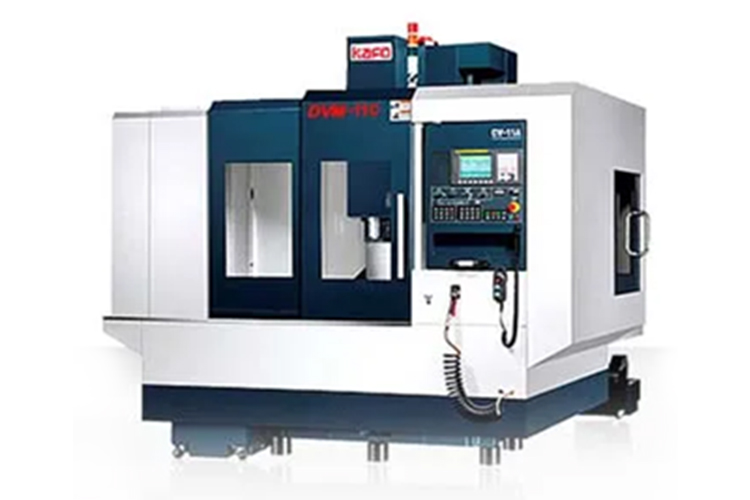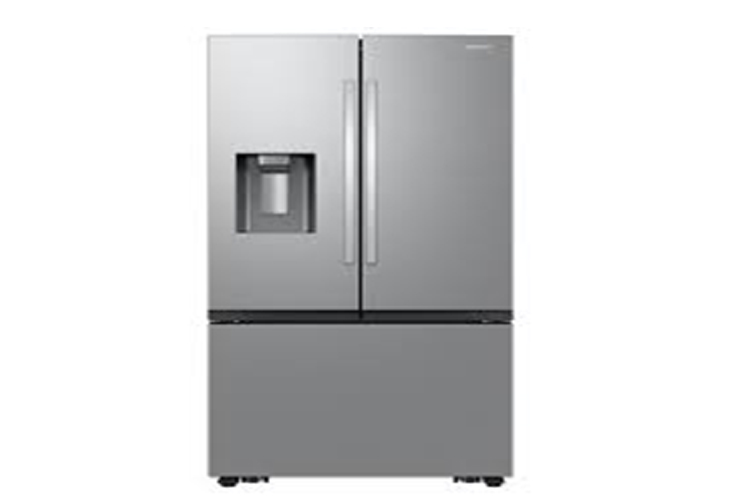Laboratory
Electrical Machines Lab
Electrical Machines Lab
About
The objective of this electrical machines lab is to give the students a favourable atmosphere to comprehend certain crucial ideas and applications in the field of electrical machines and energy conversion systems. This laboratory is designed to help students become proficient in the operation, testing, and analysis of various machines such as DC motors, transformers, synchronous and induction machines. It enables students to perform load tests, speed-torque analysis, and efficiency evaluations under different operating. The objective of this lab is to give the students a favourable atmosphere to comprehend certain crucial ideas and applications in the field of electrical machines and energy conversion systems. This laboratory is designed to help students become proficient in the operation, testing, and analysis of various machines such as DC motors, transformers, synchronous and induction machines. It enables students to perform load tests, speed-torque analysis, and efficiency evaluations under different operating conditions. Additionally, the lab provides hands-on experience in studying machine conditions. Additionally, characteristics, controlling motor performance using, the lab provides hands-on experience in studying machine characteristics, controlling motor starters and braking methods, and understanding performance using starters and braking methods, and understanding concepts like voltage regulation, arm concepts like voltage regulation, armature reaction, and power factor correction. The students can also learn to simulateature reaction, and power factor correction.
Core Areas
Facilities
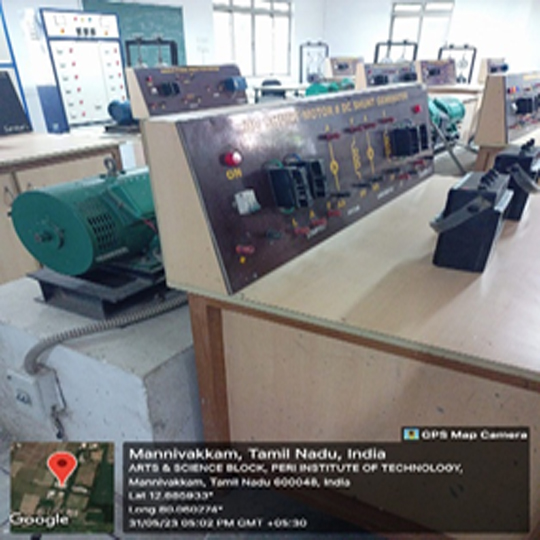
DC Shunt Motor # DC Shunt Generator
In electrical machines laboratories, the DC Shunt Motor and DC Shunt Generator are extensively used for demonstrating fundamental electromechanical principles, particularly those involving constant speed operation and voltage regulation. The DC Shunt Motor provides a stable speed under varying load conditions, making it ideal for studying torque-speed characteristics and efficiency in devices like fans and lathes. Meanwhile, the DC Shunt Generator offers a predictable output voltage, allowing students to investigate loading effects, terminal characteristics, and field current variation during performance tests.
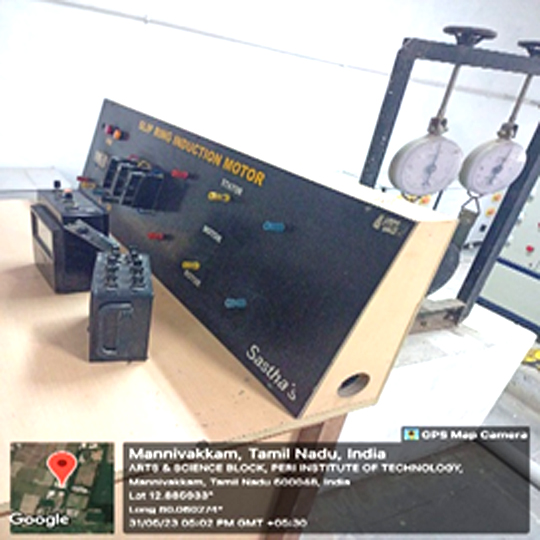
Slip Ring Induction Motor
In electrical machines labs, the Slip Ring Induction Motor is used to demonstrate variable speed control and high starting torque, making it a valuable teaching tool for understanding complex industrial motor applications. By allowing external resistance to be added to the rotor circuit, students can observe how torque-speed characteristics change with rotor resistance, making it ideal for experiments involving lifts, hoists, and heavy-duty machinery simulations. The motor also supports studies on rotor slip, power factor variation, and dynamic braking techniques.
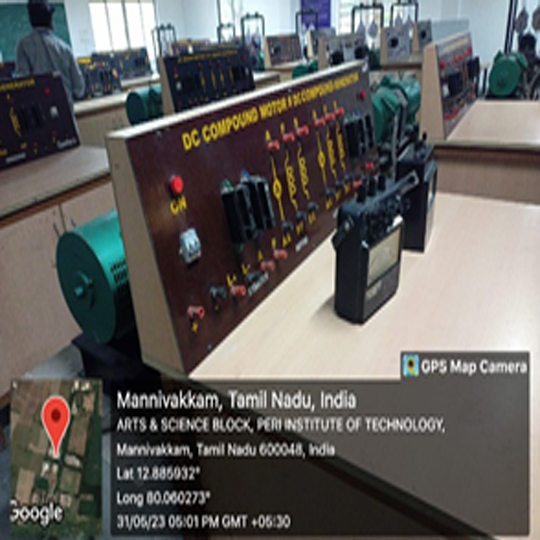
DC Compound Motor DC Compound Generator
In electrical machines laboratories, the DC Compound Motor and DC Compound Generator are used to explore the combined effects of series and shunt field windings, offering a rich platform for understanding variable load behaviour and dynamic performance. The DC Compound Motor is ideal for experiments that involve high starting torque and regulated speed control, such as simulations of elevators or rolling mills, allowing students to study torque-speed curves and field compounding techniques. The DC Compound Generator enables observation of voltage regulation under different load conditions, making it useful for experiments like load testing, open-circuit characteristics, and field flux variation.
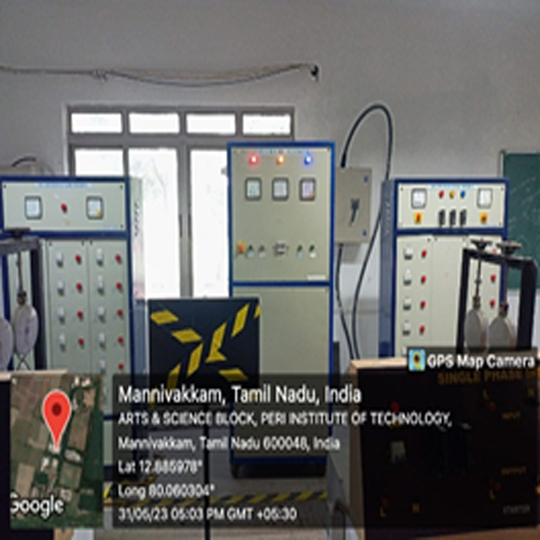
Control Panel
In electrical machines laboratories, the Control Panel plays a central role in managing, monitoring, and safeguarding the operation of various machines and experiments. It provides an organized interface with switches, indicators, meters, relays, and circuit breakers, enabling students to control power flow, start and stop machines, and measure parameters like voltage, current, speed, and torque. The control panel helps in configuring circuit connections for motors and generators, applying loads during testing, and ensuring safe operation through protective devices. It supports fault simulation, direction control, and multi-machine coordination, making it essential for hands-on learning of electrical control, system diagnostics, and interlocking mechanisms. With its real-time feedback and flexible layout, it fosters intuitive understanding of machine behaviour and operational safety in practical lab environments.
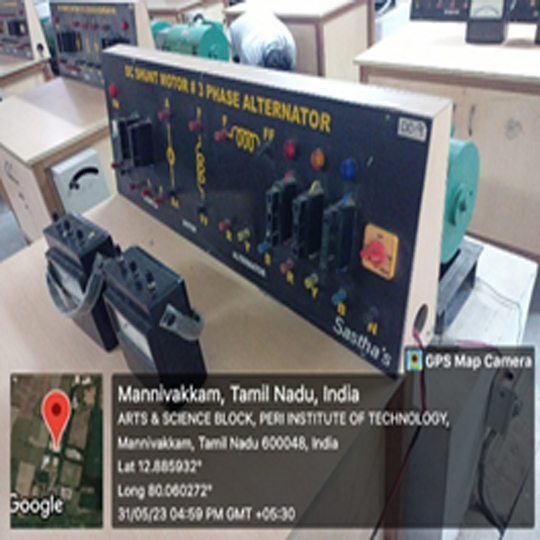
DC Shunt Motor 3 Phase Alternator
In electrical machines laboratories, the DC Shunt Motor and Three-Phase Alternator are paired to demonstrate fundamental principles of motor-generator setups, electromagnetic induction, and real-world power generation techniques. The DC Shunt Motor, with its consistent speed under varying load, drives the alternator mechanically—allowing students to observe how rotational motion is converted into electrical energy across three output phases. This setup facilitates experiments on synchronous speed, frequency control, voltage regulation, and load response of the alternator. Students can monitor waveform patterns, study the effect of excitation on output characteristics, and gain hands-on experience with practical electromechanical energy conversion systems used in power plants and backup generators.
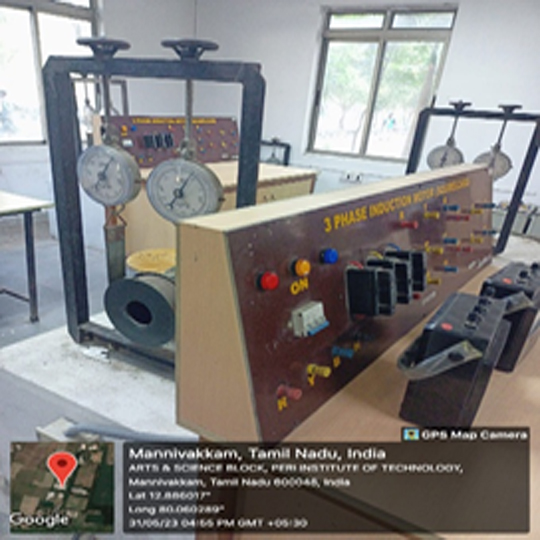
Three Phase Induction Motor-Squirel Cage
In electrical machines laboratories, the Three-Phase Squirrel Cage Induction Motor is widely used to study the behaviour of robust and commonly used industrial drives. This motor provides a stable operating speed and requires minimal maintenance, making it ideal for experiments involving load characteristics, torque-speed curves, and efficiency analysis under various conditions. Students can observe its performance in applications like fans, pumps, and compressors, and explore startup techniques such as direct-on-line (DOL), star-delta, and auto-transformer methods. The lab setup often includes investigations into power factor, rotor slip, and braking mechanisms, helping learners understand why squirrel cage motors dominate in sectors requiring reliability and simplicity.



